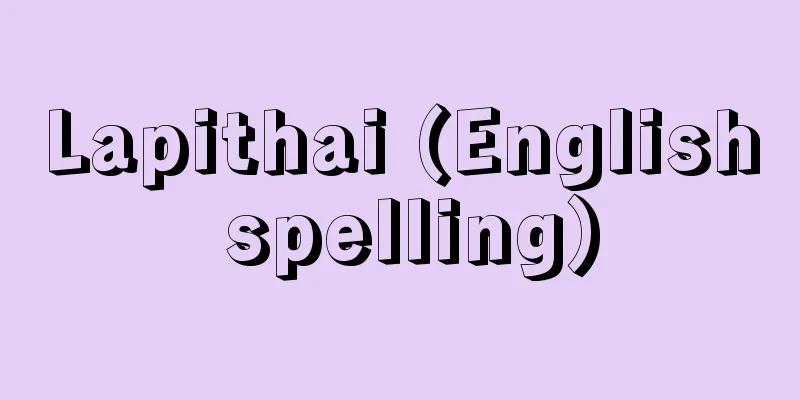Imperial Ceremonies

|
These are rituals held by the Imperial Family, and are primarily based on Shinto ceremonies. There are many Imperial Family rituals, including those that have been inherited from ancient rituals, such as the Niiname-sai, and those that were newly established under the influence of the policy of making Shinto the state religion and the policy of separating Shinto and Buddhism after the Meiji Restoration, such as the Genshi-sai. The current Imperial Family rituals follow the various rituals that were newly institutionalized after the Meiji Restoration, but they were codified and institutionalized as a whole as "Imperial Family Rituals" in the "Imperial Family Rituals Order" of 1908 (Meiji 41). The "Imperial Family Rituals Order" consists of 3 chapters, 26 articles, and 2 supplementary sections, and it is the order that organizes, codifies, and solidifies the Imperial Family rituals that were implemented after the Meiji Restoration. Previously, there was no distinction between major and minor imperial rituals, but this ordinance established a distinction between major and minor rituals, and also stipulated fasting, mourning and ceremonial clothing, Shinto rituals, and rituals other than the regular festivals (temporary festivals). This ordinance was abolished in May 1947 (Showa 22). Grand festivals are the Emperor's personal festivals and there are the following types: (1) Genshisai (the Beginnings Festival) (January 3) This festival celebrates the origins of the Imperial Throne and is held in the three Imperial Palace shrines (the Kashikodokoro, the Koreiden, and the Shinto shrine). (2) Kigensetsu Festival (February 11th): A personal worship service for Emperor Jimmu, the founding father of the nation, is held at the Imperial Ancestors' Shrine. (3) Spring Imperial Ancestors' Festival (Spring Equinox Day) A ceremony held at the Imperial Ancestors' Shrine to worship the spirits of past emperors and others. (4) Spring Shrine Festival (Vernal Equinox Day) The shrine holds a special festival for the gods of heaven and earth and the eight million gods. The Autumn Imperial Ancestors Festival and Autumn Shrine Festival (both on the Autumn Equinox Day) are also held in the same way as in the spring. (5) Emperor Jimmu Festival (April 3) The day of the death of Emperor Jimmu, a ceremony is held three times at the Imperial Ancestors' Shrine: in the morning, midday, and evening. The midday ceremony is a main ceremony. (6) Kanname-sai (October 17th) The Kanname-sai, which has been the most important ritual at Ise Shrine since ancient times, is also held at the Kashikodokoro on the same day. (7) Niiname-sai (November 23) This is a ritual in which the current year's new grain is offered to Amaterasu Omikami, the Imperial Ancestor, and is the most important ceremony for the Imperial Family. In addition to these, there are other major festivals such as the Taisho Emperor Festival, the annual festivals of the three previous emperors, and the annual festivals of the previous and next empresses. Minor festivals include the Saitan Festival (January 1st), the Niname Festival (February 17th), the Meiji Festival (November 3rd), the Kashikodokoro Mikagura (mid-December), and the Tencho Festival (the Emperor's birthday), during which the Emperor pays respects and the Chief Priest of Ceremonies performs the ceremony. [Sakamoto Koremaru] Source: Shogakukan Encyclopedia Nipponica About Encyclopedia Nipponica Information | Legend |
|
皇室で執り行われる祭祀で、おもに神道的儀式を基本としている。皇室祭祀には、新嘗祭(にいなめさい)など古代からの祭祀を継承したものや、元始祭(げんしさい)などのように明治維新後の神道(しんとう)国教化政策、神仏分離政策の影響を受けて新たに定められた神道祭祀など多数ある。現行の皇室祭祀は、明治維新後新たに制度化された諸祭祀を踏襲しているが、一括して「皇室祭祀」として法文化、制度化されたのは1908年(明治41)の「皇室祭祀令」においてである。「皇室祭祀令」は3章26条および附式2編からなり、明治維新後実施された皇室での祭祀を整備、条文化し、固定化したものである。皇室祭祀には、以前は大祭と小祭の区別はなかったが、本令によって大小の区別がなされ、また斎戒、服喪や儀服、神事式、および恒例祭以外の祭祀(臨時祭)なども定められた。本令は1947年(昭和22)5月廃止。 大祭は天皇の親祭で、以下の種類がある。 (1)元始祭(1月3日) 皇位の始源を祝い、宮中三殿(賢所(かしこどころ)、皇霊殿、神殿)で行われる。 (2)紀元節祭(2月11日) 皇霊殿で建国の祖とする神武(じんむ)天皇を親祭。 (3)春季皇霊祭(春分の日) 皇霊殿で歴代天皇などの霊を祀(まつ)る祭儀。 (4)春季神殿祭(春分の日) 神殿で天神地祇(てんじんちぎ)、八百万神(やおよろずのかみ)を親祭。なお秋季皇霊祭、秋季神殿祭(いずれも秋分の日)も春と同様に行われる。 (5)神武天皇祭(4月3日) 神武天皇崩御日として皇霊殿で朝、昼、夕の三度祭典が行われ、昼の儀に親祭がある。 (6)神嘗祭(かんなめさい)(10月17日) 古来から伊勢(いせ)神宮の最重儀である神嘗祭を同日に賢所でも行うもの。 (7)新嘗祭(11月23日) 当年の新穀を皇祖天照大神(あまてらすおおみかみ)に供する祭儀で、皇室第一の重儀。 なおこのほか、大祭には大正天皇祭など先帝以前3代の式年祭や先后の式年祭などがある。小祭には歳旦(さいたん)祭(1月1日)、祈年祭(2月17日)、明治節祭(11月3日)、賢所御神楽(みかぐら)(12月中旬)、天長節祭(天皇誕生日)などがあり、天皇は拝礼、掌典(しょうてん)長が祭典を行う。 [阪本是丸] 出典 小学館 日本大百科全書(ニッポニカ)日本大百科全書(ニッポニカ)について 情報 | 凡例 |
>>: Imperial property - Koushitsuzaisan
Recommend
Ueno Station - Uenoeki
One of the main JR stations in Ueno, Taito Ward, T...
Acting - Gien
Year of death: June 15, 1626 (Kan'ei 3, leap y...
Nymphalidae - Nymphalidae
A general term for the Nymphalidae family of butt...
Copy Folder
The term refers to British peasants whose land tit...
Flower instruction book - Kadensho
[1] [Noun] ① Tachibana scriptures. There are vario...
Blowout
...the vertical cross section is parallel to the ...
Tswana people - Tswana (English spelling)
Botswana (also called Botswana or Bechuana). A Ban...
Nucleotide-based seasonings
5' -ribonucleotides, especially disodium inosi...
Othello
Verdi's four-act opera. Composed between 1884 ...
Turmeric isomatsu - Turmeric isomatsu
A shrub-like perennial plant of the Plumageceae f...
Protea mellifera (English spelling) Proteamellifera
… [Mitsuru Hotta]... *Some of the terminology tha...
ICEF-JAF - ICEF-JAF
...With the same purpose, in the chemical industr...
Fritillaria imperialis (English spelling) Fritillaria imperialis
…[Naruhashi Naohiro]. . … *Some of the terminolog...
Abbati, G.
… Fattori blended moving figures with the landsca...
Meeting - to make
[1] (independent verb) Kuai-su (independent verb) ...









